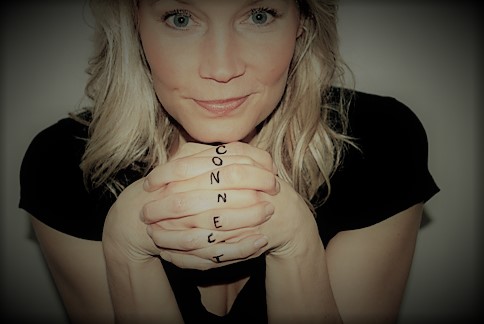In these days of enforced work from home, we’re all contending with challenges we haven’t faced before. One of the biggest changes is the increased time we’re spending on video calls.
I recently talked to some friends and colleagues about how hard it is to spend the day on video conferences and got their answers to this question:
What have you secretly done on video calls in the past few months that you would never do in an in-person meeting?
The responses were shocking—and funny.
Here are my Top Ten Favs:
10. Edited vacation photos
9. Watched video on how to give myself a haircut
8. Gone braless (since March)
7. Got to Level 826 in Candy Crush
6. Shut off a boring meeting and blamed it on a bad internet connection
5. Had a full-on text conversation with my mother
4. Looked online for another job
3. Scratched an itch under the desk, shall we say
2. Took a second Zoom meeting at the same time
… and Number 1?
On a single call, turned off the video and made lunch, ate lunch, smoked a cigarette, folded clothes, cleaned sliding glass doors, and filled bird feeders.
So how about you?
Come on, ‘fess up. We’ve all done it.
How focused are you on video calls throughout the day? Have you ever thought to yourself, “If nobody can tell I’m distracted, then what’s the harm?”
The challenge is… that’s not necessarily true. I run group coaching calls with groups of 10 on a regular basis, and I can almost always tell when folks are distracted. It’s actually easier to read the room on Zoom, where we can scan 10 faces without even turning our heads! It’s very clear who’s sitting with eyes forward and who’s not. I can spot who’s not paying attention, and I’m guessing your colleagues can, too.
So we’re busted. Now what?

Zoom Fatigue Is Real
Look, I’m sympathetic. Zoom fatigue is real for a lot of reasons. But the work world is changing, and video calls are here to stay, like it or not.
The technology on its own takes extra effort, and our patience can be tested when meetings are disrupted by technical bugs. Somebody forgets to unmute. Another person’s feed starts to stutter and they drop off. A minute later they text you to say they’re trying to reconnect.
That shit just gets old.
Another factor is that video calls force us to watch not only others, but also ourselves, with a lot more intensity.
In this excellent article from BBC.com by Manyu Jiang on why video chats are so exhausting, Marissa Shuffler, an associate professor at Clemson University says, “When you’re on a video conference, you know everybody’s looking at you; you are on stage, so there comes the social pressure and feeling like you need to perform. Being performative is nerve-wracking and more stressful.”
When we started working from home, we did what we thought we had to do and swapped video conferencing for every hour we spent at work.
Today we’re entering Phase 2. Being on video calls all day is too much. It’s time to find ways to work together with less stress and fatigue.
5 Fixes That Help Focus
Back when we all worked in offices, we had options about how we interacted with others, whether in person, via phone, video conference, or a combination of the above.
When video is required, do it right. When it’s not, mix up the way you interact.

1. Schedule some calls the old-fashioned way. We used to do it all the time, and we got stuff done. You’ll be surprised at how productive one can be if you simply kick back, listen and engage with your eyes closed.
2. When speaking on the phone or on video, use a normal tone of voice. This article from The Verge by Aliya Chaudhry has a number of great tips for being clearly seen and heard on calls, including a reminder to speak at your normal volume. “There’s no need to shout,” she says. “If you do, your co-workers may lower their volume and miss something.” (Amen to this! Shouting has been a problem since the hands-free phone feature was introduced, and it creates instant fatigue for listeners. People still shout when doing calls from their cars, especially.)
3. When video is the best choice, make your meetings tightly focused. Publish an agenda including start and end times, and stick to them. When meetings wander, so do attention spans.
Talia Maschiach, CEO and Founder of Eved, instituted a weekly company meeting in 2020 including all personnel from Chicago, China, and Europe. “With everyone isolated and working from home,” she says, “there was a greater need to connect. We had to do layoffs and furloughs, and we lost customers. Communication and transparency became more important.” Calling a weekly meeting for the entire workforce is unusual, but Maschiach keeps them tight. “It’s only a half hour every week, but these calls have kept morale high and strong.”
4. Take advantage of the record function of video conferencing services. Taking notes can occasionally be a distraction in itself. Some services will even transcribe meetings for you word for word.
5. Try a walk-and-talk meeting. Remember the fun of in-person contact? I’ve been doing walk-and-talks for the last few months, and it’s been productive. I make a plan to meet a client or colleague at a local park, and we do a few laps while getting fresh air and a little exercise. Be sensible and use masks and social distance, of course, but give it a try. Getting up and out breaks up the monotony, promotes circulation, and actually aids focus.
If you’re a leader, think about how well your corporate culture is using technology to communicate, and consider flexible options if your workforce is Zoom-stressed. That temptation to goof off in meetings, achieve a new personal best in Candy Crush and feed the birds will diminish when employees are more focused and engaged.


